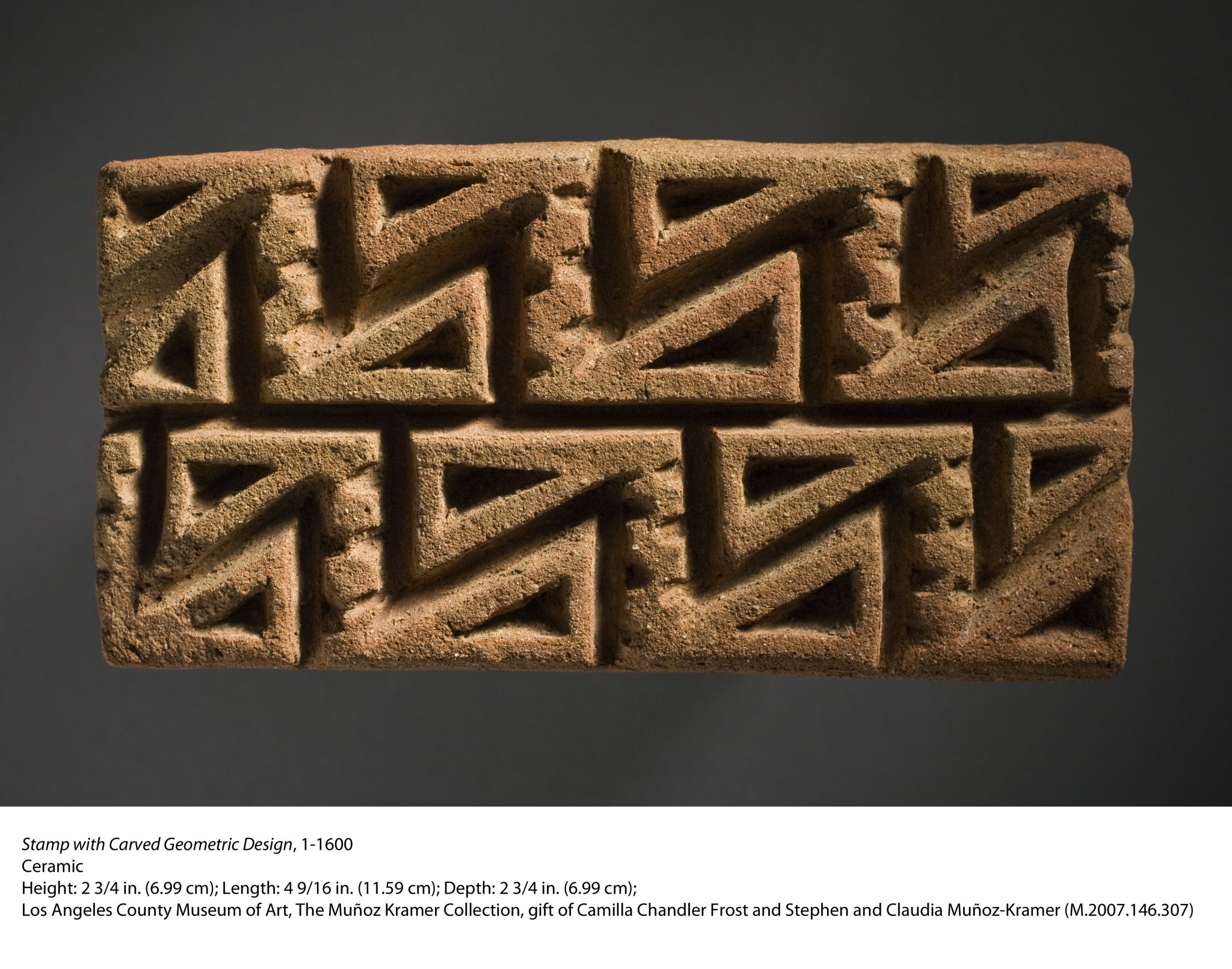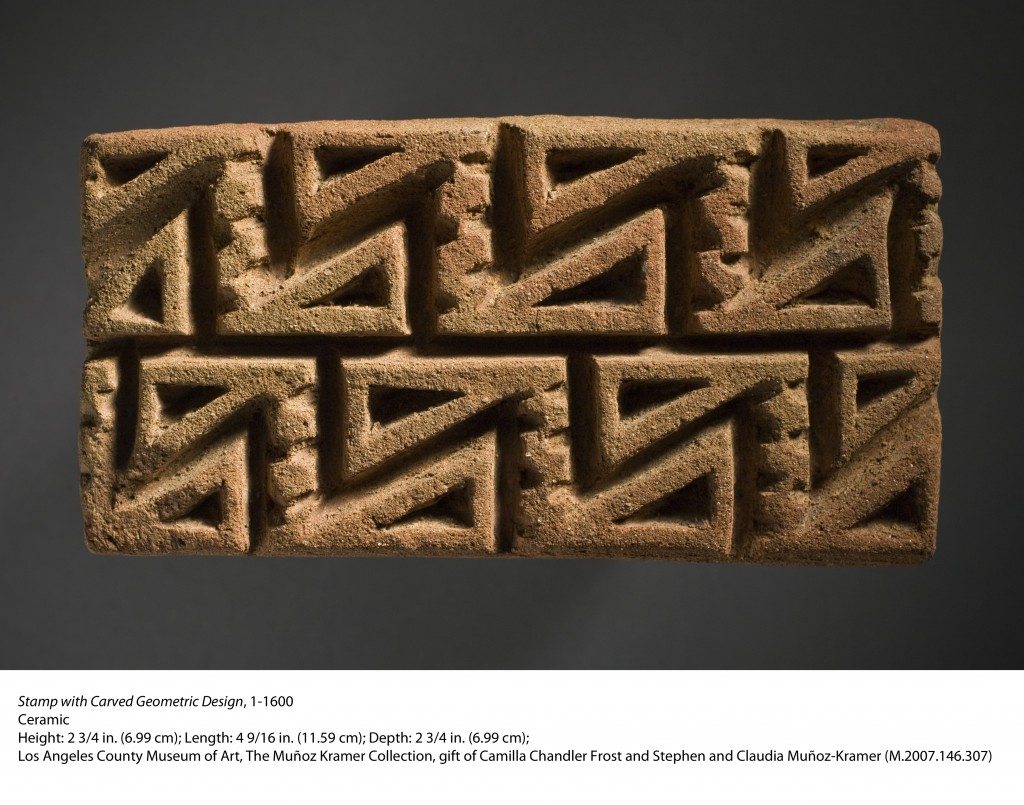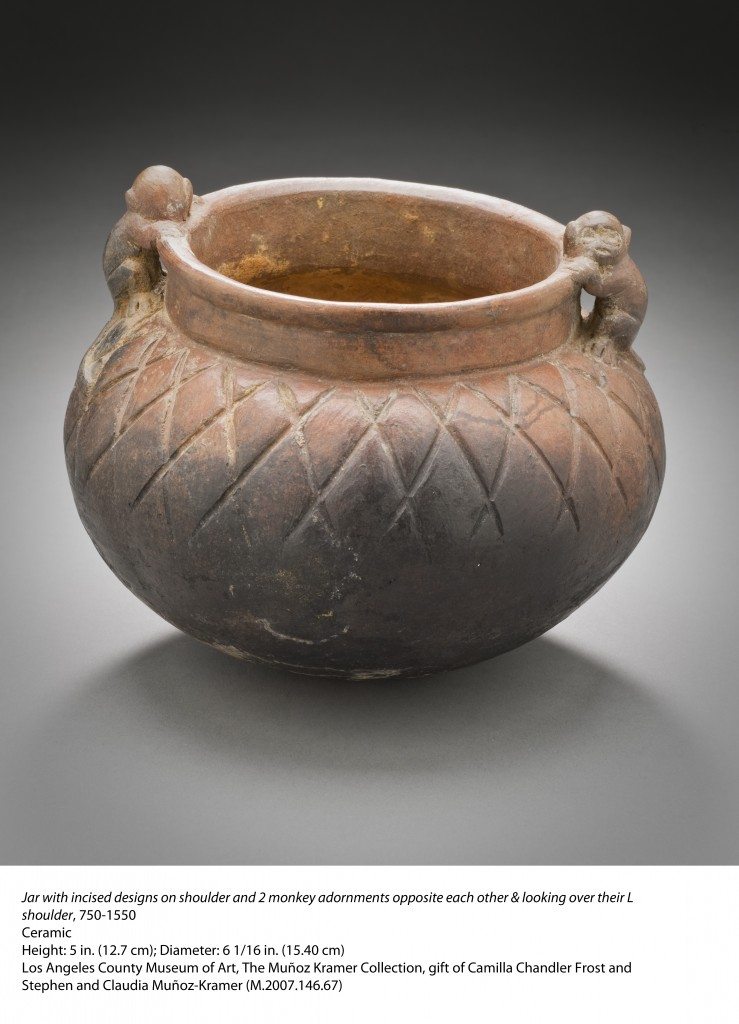Despite the popular appeal of the legendary city of El Dorado, our collective understanding of ancient Colombia’s history remains largely obscured by the advanced civilizations of Mesoamerica and the Andes. A new exhibition at the Los Angeles County Museum of Art (LACMA) in Los Angeles, CA, however, reveals that ancient Colombia’s past is far older and more diverse than is apparent in documents written by Spanish conquistadores. Drawing from LACMA’s impressive collection of ancient Colombian artifacts, Ancient Colombia: A Journey through the Cauca Valley offers fresh perspectives on the material culture and indigenous history of Colombia’s native peoples.
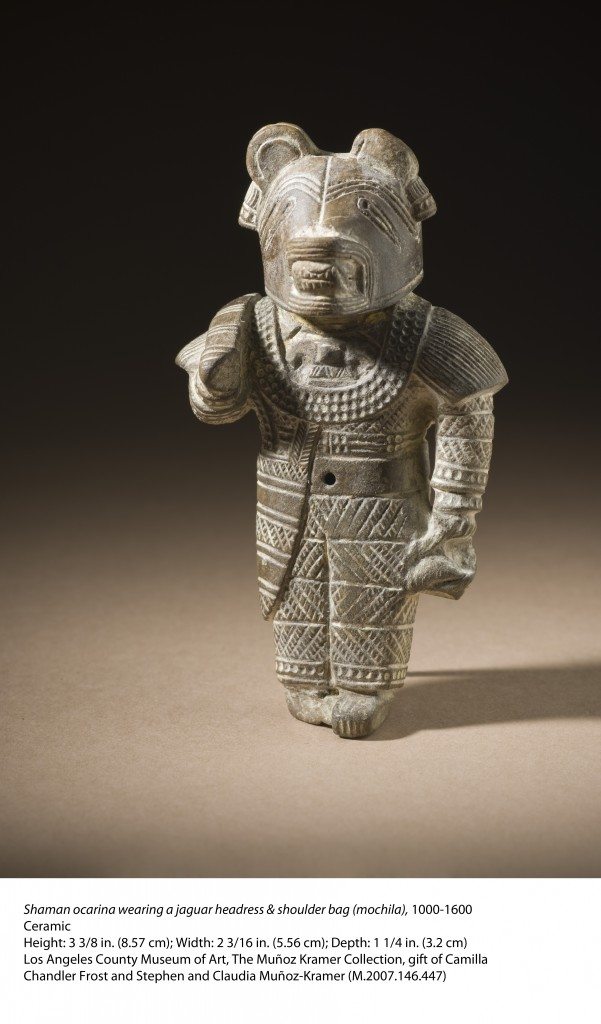 In this interview, James Blake Wiener of Ancient History Encyclopedia (AHE) speaks to Dr. Julia Burtenshaw-Zumstein, a Post-Doctoral Curatorial Fellow in LACMA’s Art of the Ancient Americas department, about this exciting new exhibition, which juxtaposes colonial Spanish documents with recent archaeological finds.
In this interview, James Blake Wiener of Ancient History Encyclopedia (AHE) speaks to Dr. Julia Burtenshaw-Zumstein, a Post-Doctoral Curatorial Fellow in LACMA’s Art of the Ancient Americas department, about this exciting new exhibition, which juxtaposes colonial Spanish documents with recent archaeological finds.
JW: Dr. Julia Burtenshaw-Zumstein, welcome to Ancient History Encyclopedia (AHE). I’m so glad to have a chance to discuss this very special exhibition that underscores an important but often forgotten chapter in Latin American history.
Why didn’t the Spanish conquests of what is present-day Colombia capture the public’s imagination like those of Aztecs and Incas? Do we have textual evidence of how the conquest of Colombia received in Spain in 1533 CE? I suspect the prior conquest of Peru in 1532 CE overshadowed news from Colombia. Would this be correct?
JBZ: History can be funny like that, James. Perhaps if William Prescott (1796-1859 CE), the famous American historian and Hispanist, had written his best-selling, dramatic accounts on the conquest of Colombia, instead of Peru and Mexico, the legacy of Colombia would have been different! One reason, for sure, is that there were no “empires” to be conquered in Colombia. The conquistadors never faced armies of thousands, and they did not they find stone-built cities on the scale of Tenochtitlán or Cuzco. The largest chiefdom (or confederation of chiefdoms) encountered by the Spaniards was that of the Muisca, in the area around what is now the capital city of Bogotá. That culture is not represented in Ancient Colombia: A Journey through the Cauca Valley because LACMA’s focuses only on the Cauca Valley (“Valle del Cauca”), but to answer your question, I’ll briefly elaborate as it’s an incredible story:
Although not an “empire,” the conquest of the Muisca was one of the most profitable in the Americas — probably second only to the conquest of Peru — for those 173 Spaniards who survived illness, injury, and malnutrition to get there. So why aren’t their exploits more famous? One issue may be that when the expedition of Gonzalo Jiménez de Quesada (1509-1579 CE) got to Muisca territory in 1537 CE, they didn’t return to their financiers to report on their discovery. Instead, they stayed in the region for two years, exploring and looting, without sending any contact or correspondence back to Europe. This may have contributed to a lack of awareness back home, and indeed, an overshadowing by the events that came out of Peru. (The conquest of Peru happened slightly earlier with the capturing, ransoming, and killing of Emperor Atahualpa in 1532 CE. In Colombia, the Spaniards also captured a chief — Tunja — and also ransomed him for a room full of gold and precious stones, but this story isn’t so well-known.)
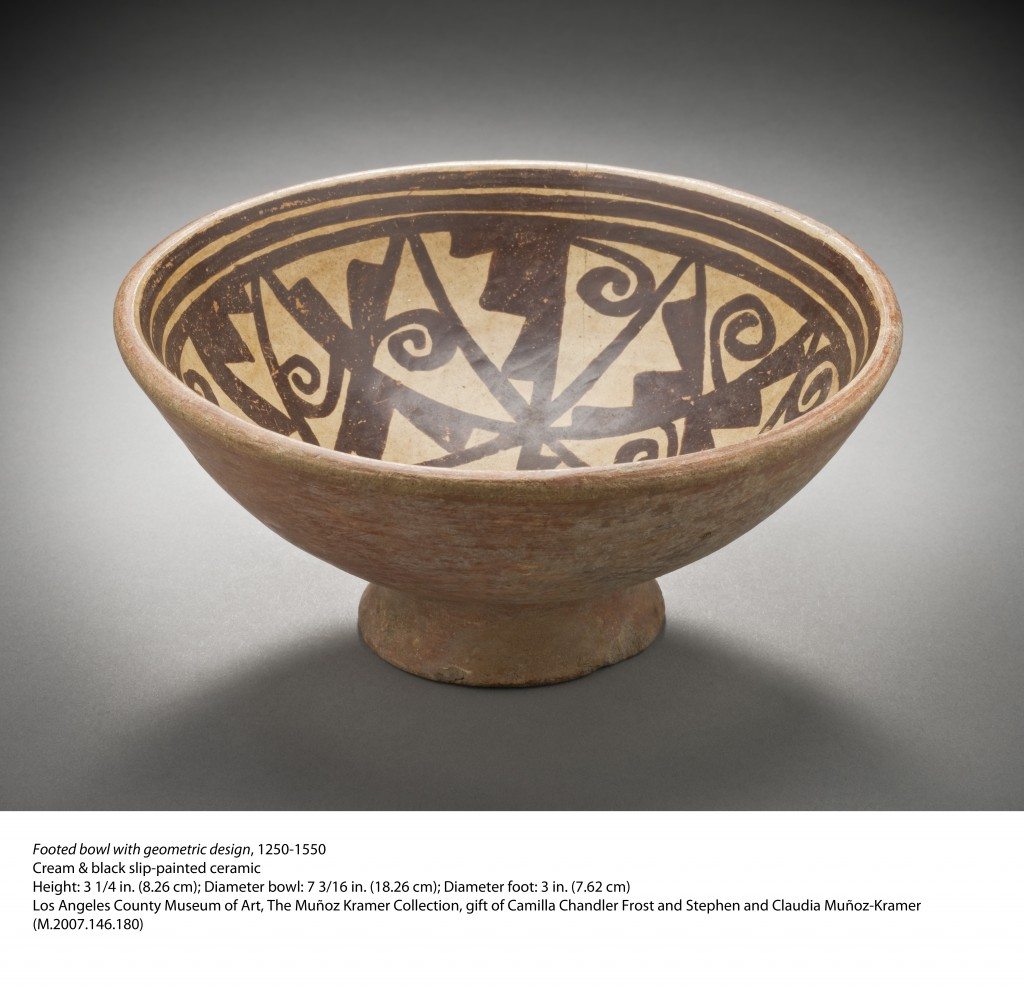 Nonetheless, while the conquest was hugely profitable, it is true that Quesada’s story lacks the drama of the Aztec and Inca conquest narratives: no battles on island causeways and no Spaniards sacrificed atop pyramids. Quesada’s story also doesn’t have the suspense of an encounter like the one between Francisco Pizarro (1478-1541 CE) and Atahualpa (1497-1533 CE), with thousands of Inca warriors surrounding a few hundred Spaniards.
Nonetheless, while the conquest was hugely profitable, it is true that Quesada’s story lacks the drama of the Aztec and Inca conquest narratives: no battles on island causeways and no Spaniards sacrificed atop pyramids. Quesada’s story also doesn’t have the suspense of an encounter like the one between Francisco Pizarro (1478-1541 CE) and Atahualpa (1497-1533 CE), with thousands of Inca warriors surrounding a few hundred Spaniards.
I’m not sure how news of the conquest of Colombia was received in Europe; a portion of the narrative of Pedro Cieza de León (1520-1554 CE) — a prominent Spanish conquistador and chronicler — was published in Seville as early as 1553 CE. However, his journey through Colombia doesn’t tell of dramatic conquest and, having heard stories of the Incas, perhaps people were more interested in his subsequent accounts of the Spanish in Peru. So history just forgot about Colombia — except for the myth of El Dorado of course, which continued to attract treasure-hunters to Colombia until the 1920s!
JW: The exhibition compares and contrasts the views of 16th-century Spaniards with information from contemporary scholarship.
Why did you choose to utilize Spanish texts, as source material, when creating Ancient Colombia? Additionally, in which ways do the Spanish accounts depart from recent studies of indigenous material culture?
JBZ: When dealing with ancient objects and trying to reconstruct a history, I always feel we should exploit all the sources we have at our disposal. So little archaeological work had been done in Colombia that, in researching for the exhibition, I very quickly turned to historical documents. To be honest, I then became fascinated by these texts. These were written by some of the first Europeans to enter Colombia. They saw and met some of the people we, as archaeologists, are trying to learn about; the people who made and used the objects in our collections. It’s definitely one way of getting closer to understanding the pieces within the exhibition. Additionally, Colombia has a very tropical climate and in those conditions neither wood, textiles, nor featherwork or bones survive well in the ground. So the descriptions given by chroniclers of the clothing and adornments of the indigenous people, as well as their houses and foods, are tremendously valuable, as are descriptions of rituals and practices that are otherwise invisible to us.
…In the pre-Columbian era, Colombia’s cultural diversity made it a ‘melting pot’. Colombia sits right at the geographic heart of the Americas, and its indigenous population had contact with peoples in Mesoamerica, the Caribbean, and Andean South America. This is reflected in the objects on display…”
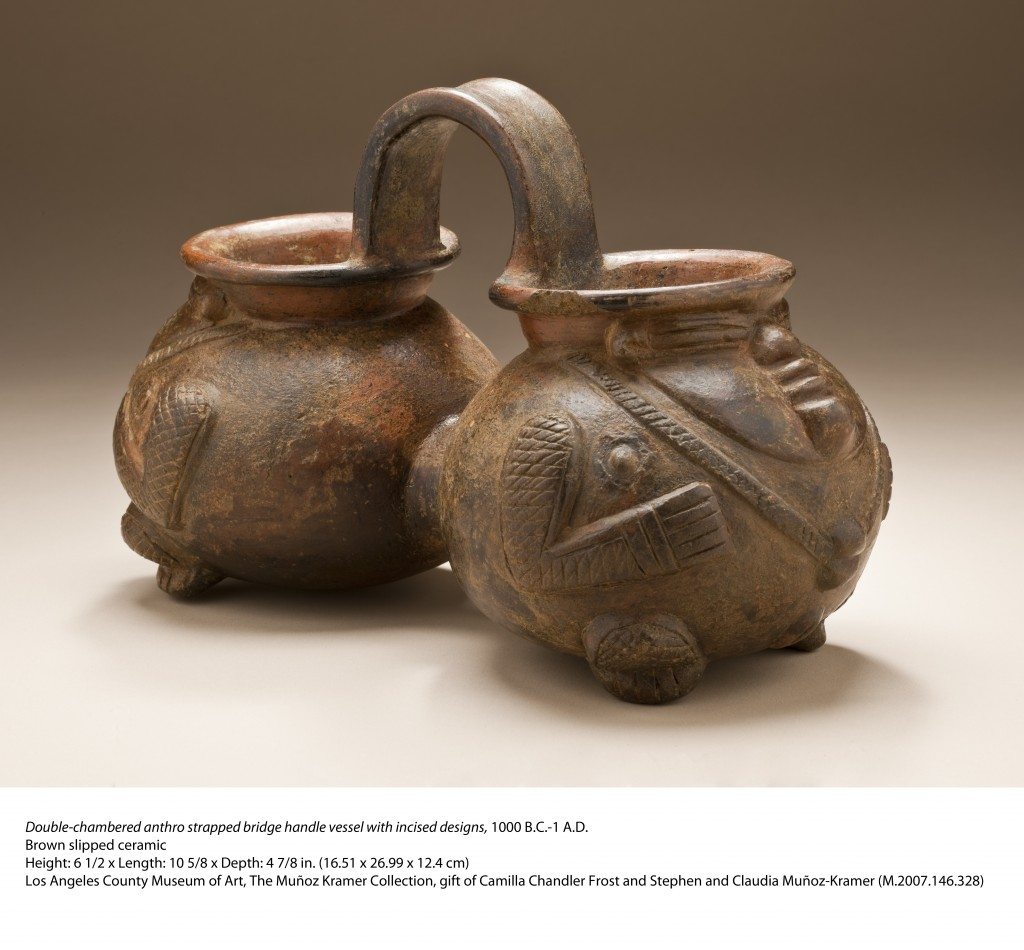 Obviously we have to be careful about using texts written by 16th-century Europeans when interpreting indigenous American practices and objects. Some wrote with a clear agenda of justifying their actions; others simply misinterpreted a lot of what they saw. For example, the scale of human sacrifice seems to have been exaggerated when comparing descriptions of funerals with what we find in the archaeological record. Other errors are found in these narratives too. For example, the Spaniards believed Colombian chiefs ruled over certain territories and described how lower ranked chiefs brought tribute from other regions. Today we know that this was part of an exchange and redistribution system between the highlands and lowlands, with subordinate chiefs functioning as intermediaries. It was not “tribute” in the European sense of the word, but a uniquely Andean system that ensured access to a variety of goods for all.
Obviously we have to be careful about using texts written by 16th-century Europeans when interpreting indigenous American practices and objects. Some wrote with a clear agenda of justifying their actions; others simply misinterpreted a lot of what they saw. For example, the scale of human sacrifice seems to have been exaggerated when comparing descriptions of funerals with what we find in the archaeological record. Other errors are found in these narratives too. For example, the Spaniards believed Colombian chiefs ruled over certain territories and described how lower ranked chiefs brought tribute from other regions. Today we know that this was part of an exchange and redistribution system between the highlands and lowlands, with subordinate chiefs functioning as intermediaries. It was not “tribute” in the European sense of the word, but a uniquely Andean system that ensured access to a variety of goods for all.
And of course, these texts can only comment on the people living in Colombia in the sixteenth century CE, ignoring a cultural history dating back thousands of years. Those have to be revealed through archaeological investigation, and some of the objects on view have been shown to be much, much older.
JW: Pedro Cieza de Léon (c. 1520-1554 CE) plays an integral role in Ancient Colombia; might you tell us a little bit more about his life, his accounts, and his travels through the Cauca River Valley? What stands out about his observations of the peoples who populated ancient Colombia?
JBZ: We don’t know much about his life other than what he tells us. He must have been born around 1520 CE, in western Spain. We also believe that his father was a merchant. Pedro Cieza de León writes that he was 13-years-old when he arrived in the Americas, but a note at the very end of his book suggests that he was about 15. What is really interesting is that he mentions actually having seen the Inca treasures that were brought to Seville from Cajamarca, Peru, which was in 1534 CE. If he did indeed see such riches, it is highly likely that this was what motivated him to go to the Indies.
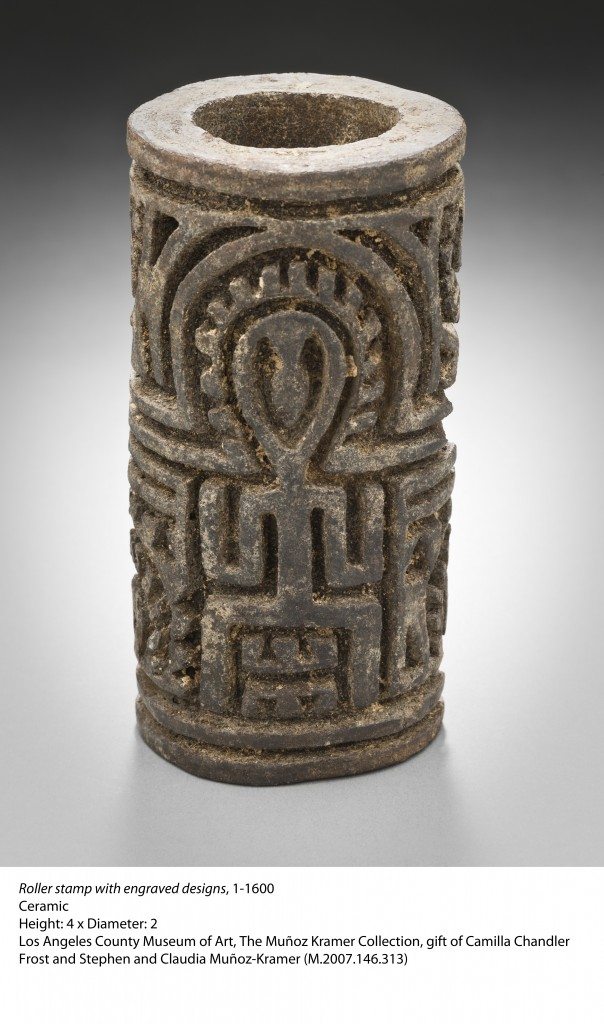 I chose to use Pedro Cieza de León’s accounts for several reasons, James. What helped the story of the exhibition is that he is someone who traversed the entire Cauca Valley, from the north coast of Colombia all the way into the southern highlands, and onwards into what is now Ecuador and Peru. So we get to hear the same voice throughout his narrative. And while he was evidently educated, his writing style remains relatively simple and direct. What is particularly nice about his accounts is that they are remarkably free of derogatory comments about the “Indians”; in fact, he expresses sympathy for them and at one stage writes that ‘those Spaniards who were cruel are deserving of punishment’. He is one of the rare conquistadors who managed to look beyond just gold and really marvel at this New World that he was seeing, and — luckily for us — to write it down without too much poetic embellishment.
I chose to use Pedro Cieza de León’s accounts for several reasons, James. What helped the story of the exhibition is that he is someone who traversed the entire Cauca Valley, from the north coast of Colombia all the way into the southern highlands, and onwards into what is now Ecuador and Peru. So we get to hear the same voice throughout his narrative. And while he was evidently educated, his writing style remains relatively simple and direct. What is particularly nice about his accounts is that they are remarkably free of derogatory comments about the “Indians”; in fact, he expresses sympathy for them and at one stage writes that ‘those Spaniards who were cruel are deserving of punishment’. He is one of the rare conquistadors who managed to look beyond just gold and really marvel at this New World that he was seeing, and — luckily for us — to write it down without too much poetic embellishment.
JW: The objects on display attest to ancient Colombia’s cultural and artistic diversity. Dr. Burtenshaw-Zumstein, are there any pieces in particular that shouldn’t be missed by visitors to LACMA? It’s worth noting that the museum is fortunate to have one of the largest collections of ancient Colombian ceramics in the U.S.
JBZ: I would say that this is a rare opportunity to see ceramics from ancient Colombia on display in the U.S. It wasn’t just the conquest that was overlooked in favor of Peru or Mexico, but also the art and artifacts, so little scholarly or museum attention has been paid to these objects in the past. So hopefully visitors to this exhibition will find new ways of representing the world that they have not seen before.
In the pre-Columbian era, Colombia’s cultural diversity made it a ‘melting pot’. Colombia sits right at the geographic heart of the Americas, and its indigenous population had contact with peoples in Mesoamerica, the Caribbean, and Andean South America. This is reflected in the objects on display: one of the Tairona figures reclines on a chair with a curved back that is extremely similar to wooden duhos (divination chairs) from the Taíno culture in the Caribbean. Another figure from Colombia’s Nariño Department is shown with a bulging cheek; he is chewing coca, which was a common practice in the highland societies of Peru and Ecuador. That said, many of the objects are absolutely unique within the Americas, such as the solid, flat figures from the Middle Cauca region or the bowls from Nariño with their incredible geometric polychrome-painted designs. These are not the most technologically sophisticated ceramics to be found in the ancient Americas (in fact, some of them are rather crudely made), but in the ways in which they are rendered, one can say that they are absolutely unique and very, very powerful.
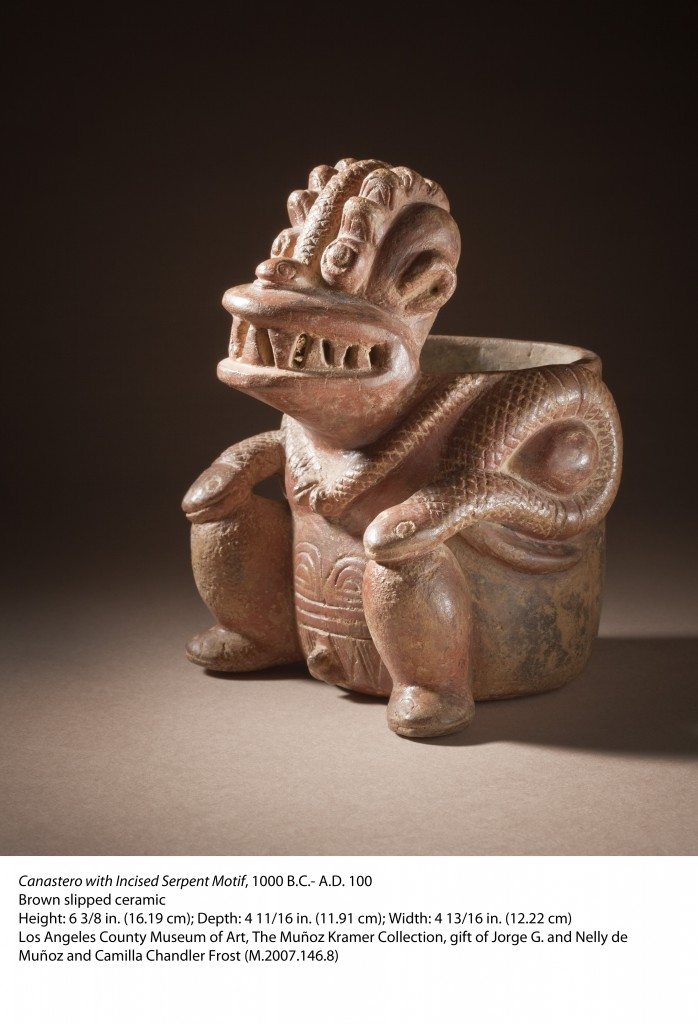 It’s tough to pick highlights of the show, given that the show itself highlights a key selection from LACMA’s collection of ancient art from the Americas. I guess my favorites are the oldest pieces, such as the little round house-model from Calima, dated to c. 1000-100 BCE.
It’s tough to pick highlights of the show, given that the show itself highlights a key selection from LACMA’s collection of ancient art from the Americas. I guess my favorites are the oldest pieces, such as the little round house-model from Calima, dated to c. 1000-100 BCE.
JW: How have visitors received and reacted to Ancient Colombia?
JBZ: LACMA’s docents and education department run regular tours of the show, and I am glad to see that these are always well-attended. I also had some interest from the Colombian community in Los Angeles, which is fantastic. Los Angeles’ Colombian newspaper, La Prensa Colombiana, featured an article about the exhibit, and hopefully it has drawn more Colombian visitors to the show as a result. We put so much work, thought, and research into this small exhibition, and it would be great to know more as to what the public is currently thinking. We plan to turn the show into an online exhibition, so perhaps there will be room for specific comments there.
JW: I cannot thank you enough for your time and consideration, Dr. Burtenshaw-Zumstein! It’s been a pleasure to speak with you and learn more about this fascinating exhibition.
JBZ: I must thank you, James! In putting this show together, I learned so many fascinating things about ancient Colombia, and I am really glad to be able to share some of that with a wider audience. It’s always nice when people are interested.
The Spanish “discovered” the territory of what is now Colombia in 1499 CE, and conquered the first coastal areas by 1510 CE. The first serious expeditions into the inland were not until 1536 CE, when Gonzalo Jiménez de Quesada headed upstream. (Pedro Cieza de Léon, who traveled under Pedro de Vadillo, went inland in 1538 CE). The Spaniards didn’t conquer the largest, most powerful chiefdoms until later: the Muisca were overpowered in 1537-1539 CE, while the Tairona survived until 1600 CE.
Coinciding with two exhibitions of ancient Colombian art currently on view in Los Angeles, LACMA’s Art of the Ancient Americas Department, in association with the Fowler Museum at UCLA, invites you to a morning of public presentations on Colombian art and archaeology on Saturday, November 14, 2015 at 10:30 AM. LACMA holds one of the largest collections of ancient Colombian ceramics anywhere in the U.S., however far too little is currently known about the ancient history, culture, and artifacts from this region. This event brings together three top scholars from Colombia and the U.S. whose presentations will provide a unique insight into the extraordinary art and archaeology of ancient Colombia: Colin McEwan, Director of Pre-Columbian Studies at Dumbarton Oaks Research Library & Collections, Maria-Alicia Uribe, Director of the world-famous Museo de Oro (The Gold Museum) in Bogotà, Colombia, and Santiago Giraldo, Global Heritage Fund Director of Heritage Programs in Colombia, managing, amongst many others, the site of Teyuna-Ciudad Perdida (The Lost City). The event is free and open to the public. To learn more, please click here.
Ancient Colombia: A Journey through the Cauca Valley will remain at LACMA until April 10, 2016. Additionally, the Fowler Museum at UCLA is presenting a “sister-exhibition,” which nicely compliments the one at LACMA: Encountering Ancient Colombia–A Journey through the Magdalena Valley. This exhibition will run through January 3, 2016 and focuses on the peoples of Colombia’s other major river valley.
 Dr. Julia Burtenshaw-Zumstein is Post-Doctoral Curatorial Fellow in LACMA’s Art of the Ancient Americas department. “Ancient Colombia: A Journey through the Cauca Valley” is her first solo exhibition at LACMA. Julia received her doctorate from the Sainsbury Research Unit, University of East Anglia (UK), entitled: “Cupisnique, Tembladera, Chongoyape, Chavín? A Typology of Ceramic Styles from Formative Period North Peru, 1800-200 BC.” The Pre-Columbian ceramics of northern Peru in the final millennia BCE are her main area of expertise, but during the course of her career thus far, she has written on objects from Peru, Ecuador, Colombia, Panama, Guatemala, and Mexico, writing for peer-reviewed journals, museum catalogues, exhibitions, and radio programs. She previously worked at the British Museum in London, UK and the Museum zu Allerheiligen in Schaffhausen, Switzerland.
Dr. Julia Burtenshaw-Zumstein is Post-Doctoral Curatorial Fellow in LACMA’s Art of the Ancient Americas department. “Ancient Colombia: A Journey through the Cauca Valley” is her first solo exhibition at LACMA. Julia received her doctorate from the Sainsbury Research Unit, University of East Anglia (UK), entitled: “Cupisnique, Tembladera, Chongoyape, Chavín? A Typology of Ceramic Styles from Formative Period North Peru, 1800-200 BC.” The Pre-Columbian ceramics of northern Peru in the final millennia BCE are her main area of expertise, but during the course of her career thus far, she has written on objects from Peru, Ecuador, Colombia, Panama, Guatemala, and Mexico, writing for peer-reviewed journals, museum catalogues, exhibitions, and radio programs. She previously worked at the British Museum in London, UK and the Museum zu Allerheiligen in Schaffhausen, Switzerland.
All images featured in this interview have been attributed to their respective owners. Images lent to the Ancient History Encyclopedia by LACMA have been done so as a courtesy for the purposes of this interview. We extend our special thanks to Ms. Erin Yokomizo, Communications Associate at LACMA, for her assistance in helping facilitate this interview. Additional thanks is given to Mr. James Doyle, Assistant curator in the Department of the Arts of Africa, Oceania, and the Americas at the Metropolitan Museum of Art, for his support. Unauthorized reproduction is strictly prohibited. All rights reserved. © AHE 2015. Please contact us for rights to republication.
